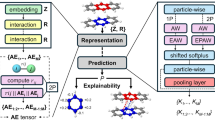Abstract
Continuous administration of 0.04% N-n-propyl-N-formylhydrazine (PFH) for life in drinking water to 6-week-old randomly bred Swiss mice induced tumours of the lungs, preputial glands, liver and gallbladder. The tumour incidences in these 4 tissues were 91, 22, 8 and 6%, whereas in the untreated controls they were 25, 0, 0.5 and 0.5%, respectively. The higher dose of 0.08% PFH, given under identical conditions, induced only tumours of the lungs, liver and gall bladder in low incidences, since the compound was too toxic for the mice. Histopathologically, the tumours were classified as adenomas and adenocarcinomas of the lungs, squamous-cell papillomas, and carcinomas and fibrosarcoma of preputial glands, benign hepatomas and liver-cell carcinoma, as well as adenomas and adenocarcinoma of the gall bladder. The investigation is part of our structure/activity relationship inquiry aimed at revealing the mechanism of action of the N-alkyl-N-formylhydrazine series of chemicals.
This is a preview of subscription content, access via your institution
Access options
Subscribe to this journal
Receive 24 print issues and online access
$259.00 per year
only $10.79 per issue
Buy this article
- Purchase on Springer Link
- Instant access to full article PDF
Prices may be subject to local taxes which are calculated during checkout
Similar content being viewed by others
Rights and permissions
About this article
Cite this article
Toth, B., Nagel, D. & Patil, K. Tumorigenesis by N-n-propyl-N-formylhydrazine in mice. Br J Cancer 42, 922–928 (1980). https://doi.org/10.1038/bjc.1980.341
Issue Date:
DOI: https://doi.org/10.1038/bjc.1980.341



